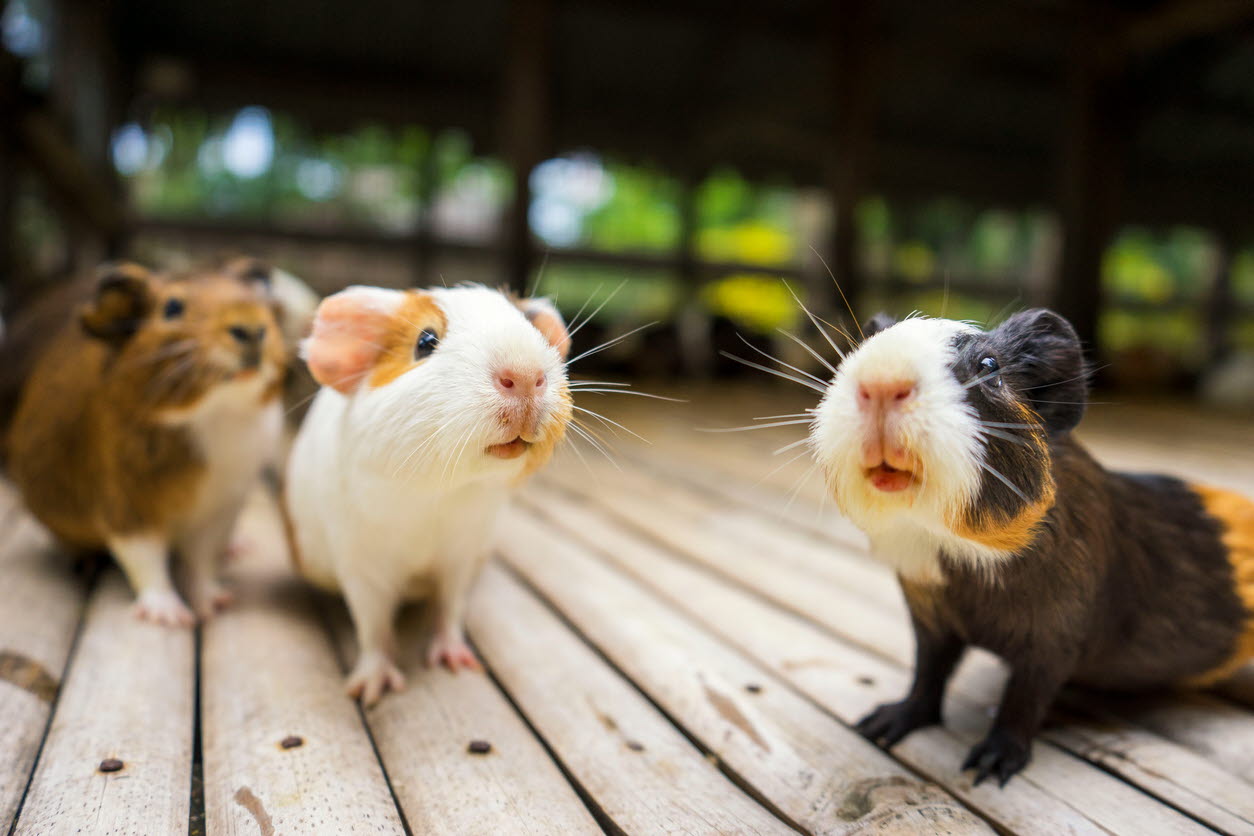Owning a guinea pig

Ask anyone who has owned a guinea pig before and they will tell you that these little rodents make great pets. Native to South America, they are common pets in Australia and America with over 11 recognised breeds including the White-Crested, Rex, Silky and Abyssinian.
Guinea pigs are usually very friendly and are a little easier to handle than rabbits. They make ideal pets for kids in preschool or above but it’s important to remember that they require a good diet and careful husbandry to help prevent health problems.
What do guinea pigs eat?
Diet is very important for a guinea pig. A good diet is important to maintain the balance of bacterial flora in the guinea pig’s gut. Their teeth also grow continuously so they require lots of fibre to help wear them down.
Like humans, guinea pigs cannot produce Vitamin C, so they require this in their diet every day. Abundant veggies and fruit are essential and you should offer a mix of fresh produce. An example of a good variety would be some red capsicum, broccoli, strawberries, parsley, spinach, cabbage, celery and cucumber. Some veggies and fruits may be high in Vitamin C but also have excessive levels of calcium and sugar so you should ask your veterinarian about how best to balance your guinea pig’s diet.
Good quality pellets should be a treat only (max 1 tablespoon per day) to help reduce obesity and should not be relied upon alone to provide sufficient levels of Vitamin C.
Guinea pigs produce two types of faecal stools. The first is a soft caecotroph and the second is a faecal pellet. Guinea pigs balance eating caecotrophs with the rest of their diet to help maximise nutrients so don’t be alarmed if you see a guinea pig eating their own poo!
Where should my guinea pig sleep?
Guinea pigs are social animals and are best kept inside to help to strengthen their relationship with you. They require dust-free bedding (e.g. shredded paper) and this needs to be changed daily. The floor of their cage should be soft and slip free. If there are split levels or ramps, make sure your guinea pig can’t get their nails caught in any metal rungs, or can’t fall down. Providing hiding spots and tunnels is essential. You can also provide some rocks and bricks in the cage to help wear down their nails and provide stimulation.
They tend not to climb so the enclosure only needs to be 30cm high but the bare minimum size for a guinea pig cage is 0.7m x 1m (and this is really only suitable for resting and sleeping and the guinea pig will still require area to run around in).
If your guinea pig is kept outside, be sure to keep them safe from predators (dogs, cats, foxes, birds).
Guinea pigs are very susceptible to heat stroke so bring them indoors when temperatures get above 28 degrees. Never keep guinea pigs inside a metal hutch as these heat up very quickly.
Guinea pig friendships
Guinea pigs are selective about their friends. The best situation is usually a desexed male with two to three females. They are not great companions for rabbits as they have different dietary requirements and often get beaten up by dominant bunnies. Rabbits can also carry a disease that is deadly to guinea pigs.
What’s the average lifespan for a guinea pig?
Guinea pigs live on average between 5 – 6 years and a maximum of 8 – 10 years. A one-year-old Guinea pig is equivalent to a 10-year-old human. This means a six-monthly health check for your pet guinea pig is equivalent to you visiting the doctor once every five years!
Ask your vet for more information if you have any questions about owning a guinea pig.
